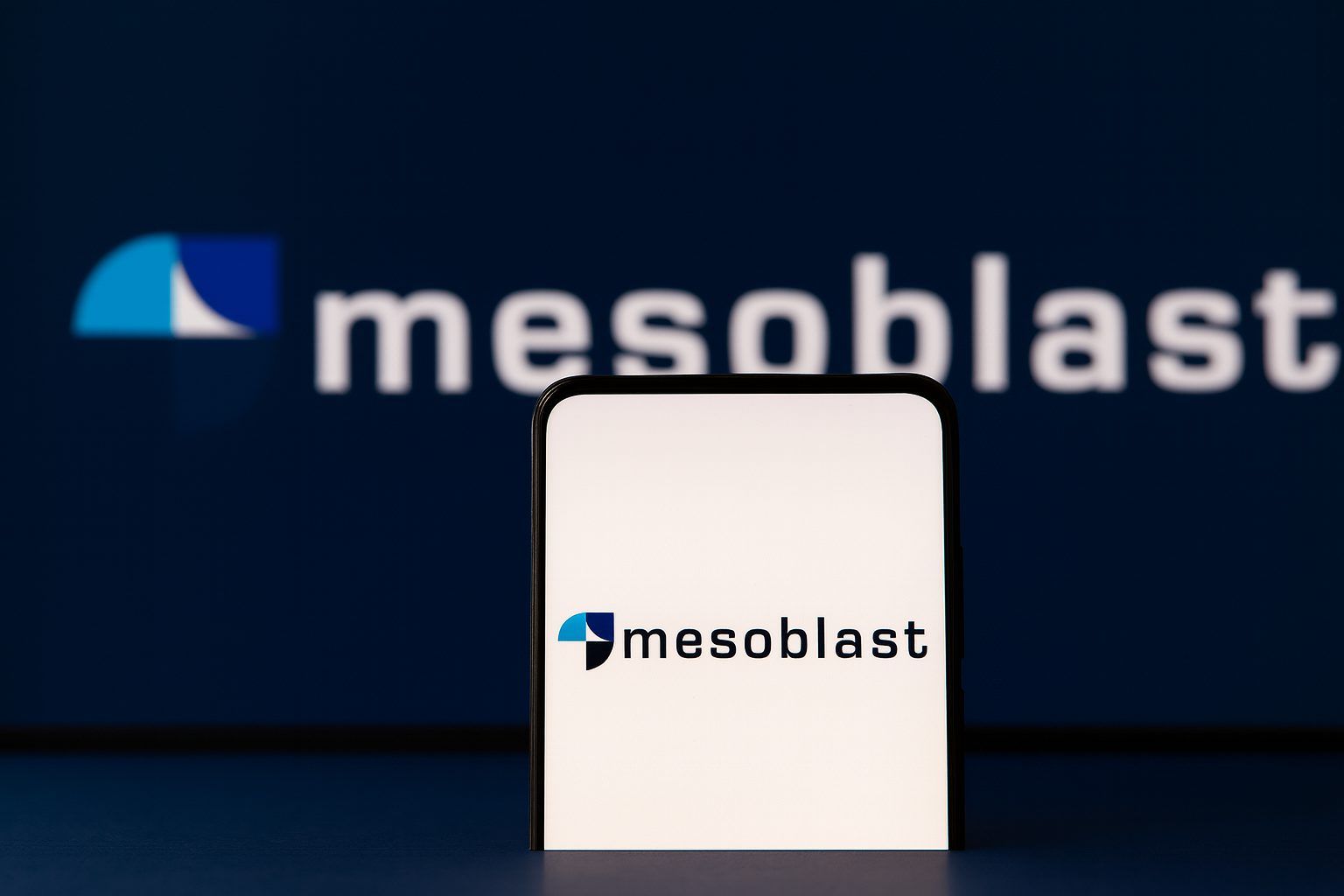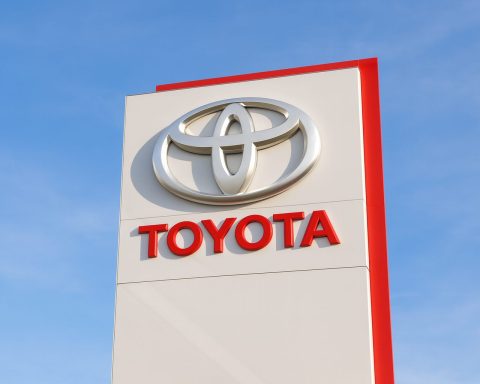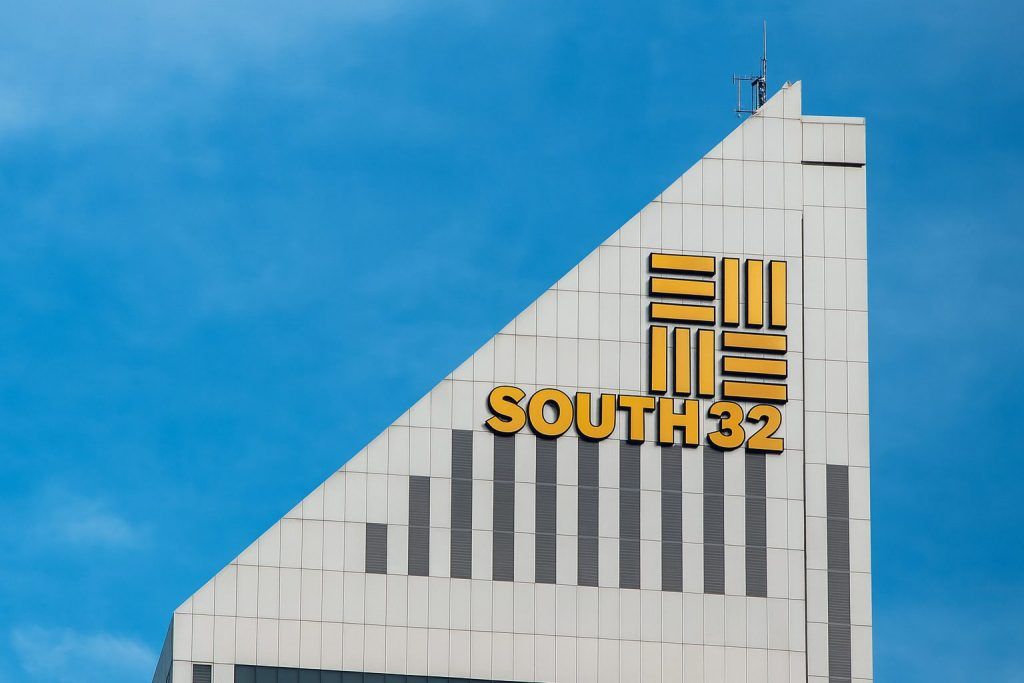Mesabi Trust (NYSE: MSB) is trading around $30.33 per unit today, extending a pullback from its late‑October highs near $36. That leaves the iron‑ore royalty trust roughly 16% below its recent 52‑week peak, even as headline dividend metrics still point to a trailing yield of about 23%. [1]
Behind the move is a complex mix of factors: a non‑recurring windfall distribution earlier this year, more modest regular payouts, a new arbitration case against Cleveland‑Cliffs’ Northshore Mining, and an iron‑ore market that’s holding above $100 per tonne despite softer steel demand. [2]
Key facts about MSB stock today
- Price and trading range: MSB is around $30.33 per unit as of November 26, 2025, versus a 52‑week range roughly between $22.7 and $36.1. [3]
- Recent performance: Units have fallen about 16% from the late‑October high near $36.14, but remain up mid‑teens over the past 12 months. [4]
- 2025 distributions: Mesabi Trust has paid a total of $6.97 per unit so far in 2025, including an unusually large $5.95 special distribution in February and smaller quarterly payouts of $0.56, $0.12 and $0.34. [5]
- Headline yield: At today’s price, that $6.97 in trailing 12‑month distributions equates to a trailing yield of roughly 23%, though much of that came from the one‑off arbitration award. [6]
- Trust structure: Mesabi Trust is a royalty trust whose income comes primarily from royalties on the Peter Mitchell iron ore mine in Minnesota, operated by Northshore Mining, a subsidiary of Cleveland‑Cliffs. [7]
- New arbitration: On September 26, 2025, the Trust initiated a fresh arbitration proceeding against Northshore and Cleveland‑Cliffs over alleged royalty underpayments and the prior idling of Northshore’s operations. [8]
MSB stock price today and recent volatility
As of the latest quote on November 26, 2025, MSB is changing hands near $30.33, with an intraday range between roughly $29.26 and $32.11 and trading volume a little over 72,000 units. That’s a significant pickup versus the trust’s typical sub‑10,000 unit average daily volume, underscoring how thin liquidity can amplify short‑term price swings. [9]
Over the past month, MSB has:
- Rallied to a 52‑week high just above $36 in late October. [10]
- Pulled back into the low‑$30s, dropping below some short‑term technical averages and triggering mixed signals from quantitative and technical screens that now highlight negative momentum after earlier strength. [11]
For investors, the takeaway is that MSB remains a low‑liquidity, high‑beta income vehicle: relatively small order flows or changing sentiment around iron ore, arbitration outcomes or distributions can move the price quickly in either direction.
What is Mesabi Trust and how does MSB make money?
Mesabi Trust is not a conventional mining company. It is a New York–organized royalty trust formed in 1961 to collect royalties from the Peter Mitchell Mine on Minnesota’s Mesabi Iron Range and distribute net income to unitholders. [12]
Key structural features:
- Single‑asset focus: The Trust’s economic interest is tied largely to one iron‑ore complex, operated by Northshore Mining, a wholly owned unit of Cleveland‑Cliffs (CCI). [13]
- Royalty model: Mesabi receives royalties based mainly on the selling price and volumes of iron ore pellets shipped from Northshore’s plant on Lake Superior, plus a smaller royalty based on tonnage mined. [14]
- Pass‑through entity: The Trust itself generally pays no corporate income tax; instead, taxable income flows directly to unitholders, who are responsible for the tax treatment of distributions. [15]
- Finite life: Like other U.S. royalty trusts, Mesabi has a legally defined duration (linked to the lifespans of specified individuals at inception), meaning it is not a perpetual company even if its remaining life is still measured in decades. [16]
Because Mesabi does not operate mines, build plants or carry debt, its financial statements often show exceptionally high profit margins: most royalty income flows through to unitholders after administrative expenses and reserves. [17]
2025: From a huge arbitration windfall to “normal” distributions
The $5.95 special distribution in February
The defining event for MSB’s income profile this year was the January 14, 2025 distribution announcement. The Trustees declared a $5.95 per unit payout, paid on February 20, 2025, compared with just $0.37 for the same period a year earlier. [18]
Crucially, management made clear that most of this amount came from a non‑recurring arbitration award:
- In September 2024, an American Arbitration Association tribunal awarded Mesabi about $71.2 million, resolving a dispute over underpaid royalties for 2020, 2021 and the first four months of 2022.
- Northshore and Cleveland‑Cliffs paid this award on October 4, 2024, and the Trust later distributed a large portion to unitholders via the $5.95 payment. [19]
This is why MSB’s trailing 12‑month yield looks so eye‑catching: it incorporates a one‑off legal recovery, not a sustainable regular payment stream.
Regular quarterly distributions have been much smaller
After the February windfall, Mesabi returned to something closer to its usual pattern of quarterly distributions driven by ongoing royalties:
- April 15, 2025: Distribution of $0.56 per unit, reflecting royalty receipts for late 2024 operations. [20]
- July 11, 2025: Distribution of $0.12 per unit, down sharply from the prior year’s $0.30, as April 30 royalties from Cleveland‑Cliffs dropped to about $2.42 million versus roughly $5.06 million a year earlier. [21]
- October 10, 2025: Distribution of $0.34 per unit, payable on November 20 to holders of record on October 30. Trustees cited total royalty payments of about $5.3 million received on July 30, 2025, but also emphasized the need to maintain reserves amid industry and macro uncertainty. [22]
Add those three “ordinary” quarterly payments together—$0.56, $0.12 and $0.34—and the underlying annualized yield at today’s price comes out closer to the mid‑single digits (around 3–4%) rather than 20%‑plus. The headline yield only looks so high because it includes the special $5.95 distribution. [23]
For income‑oriented investors, the implication is that future payouts are likely to be far more modest unless another large legal recovery or major jump in iron‑ore shipments and pricing occurs.
New arbitration: Mesabi Trust vs. Cleveland‑Cliffs and Northshore (again)
Despite winning a large award in 2024, Mesabi Trust is now back in formal dispute with its operator.
On September 26, 2025, the Trustees announced that Mesabi had initiated a new arbitration proceeding through the American Arbitration Association against Northshore Mining Company and its parent Cleveland‑Cliffs Inc. [24]
According to the press release, the Trust is seeking damages and declaratory relief related to:
- The idling of Northshore’s operations from May 2022 to April 2023, and
- Alleged underpayment of royalties on intercompany shipments from 2023 to the present. [25]
No timeline or expected financial impact has been provided, and arbitration outcomes and timing are inherently uncertain. However, the filing underscores a few important themes for MSB unitholders:
- Counterparty risk: Mesabi is highly dependent on one operator—Cleveland‑Cliffs—for both operational decisions and accurate royalty payments.
- Earnings volatility: Legal wins can generate massive, irregular cash inflows (like the 2024 award), but delays or adverse rulings can also weigh heavily on sentiment.
- Disclosure gap: Trustees repeatedly note they have received no specific long‑term planning updates from Cliffs regarding Northshore’s future utilization, complicating efforts to forecast long‑term distributions. [26]
For now, the new case is an overhang: it introduces upside optionality if the Trust prevails again, but it may also contribute to higher perceived risk and a wider required yield from investors.
Royalty trends: what the latest 8‑K tells us
While legal disputes swirl in the background, Mesabi’s routine royalty receipts provide a more direct window into current operations.
A recent Form 8‑K summary of the October 30, 2025 royalty report indicates that the Trust received roughly $4.0 million in royalties for the quarter ended September 30, 2025, including both base and bonus components. This was tied to shipments of about 987,000 tons of iron ore, slightly above the roughly 972,000 tons shipped in the same quarter a year earlier. [27]
Taken together with the April and July royalty disclosures, the picture for 2025 so far looks like this:
- Early 2025: Royalties were weaker than the prior year, contributing to the very small $0.12 July distribution. [28]
- Mid‑2025: Royalties rebounded into the mid‑year periods, supporting the $0.34 October distribution announced in October. [29]
- Late 2025: Shipment volumes remain solid year‑over‑year, but royalty totals and Trustees’ commentary continue to flag uncertainty around future production, pricing, and reserve‑setting. [30]
In short, Northshore appears to be operating and shipping, but the Trust is managing distributions cautiously in light of the industry backdrop and unresolved disputes.
Iron ore prices: supportive but not spectacular
MSB’s fortunes are closely linked to global iron‑ore pricing because royalties depend heavily on the selling price of pellets.
As of late November 2025, benchmark iron‑ore prices are:
- Trading around $100–105 per tonne, with recent quotes near $104.5 per tonne. [31]
- Supported by a mix of supply constraints and cautious optimism about future Chinese stimulus, even as steel production and mill profitability remain under pressure. [32]
Broadly:
- Prices are well below the boom levels seen in 2021 but comfortably above many producers’ marginal cost, which is constructive for royalty payers like Mesabi.
- New supply from large projects—such as Guinea’s Simandou deposit ramping up later this decade—could eventually shift the long‑term pricing floor lower, though that is more a medium‑ to long‑term overhang than an immediate concern. [33]
For MSB, sustained iron‑ore prices near or above $100 per tonne help support bonus royalties and healthier regular distributions, but they do not eliminate the cyclicality or counterparty risk embedded in the trust.
Institutional interest and technical backdrop
Horizon Kinetics’ growing stake
On the ownership side, Horizon Kinetics Asset Management—a well‑known value‑oriented investor—has continued to add to its MSB position. Recent filings show that in the second quarter of 2025 the firm increased its stake by about 2%, taking holdings to roughly 2.96 million units. That makes MSB one of its larger positions. [34]
Given Mesabi’s 13.12 million units outstanding, that position represents a substantial portion of the float and contributes to the stock’s concentrated ownership and lower liquidity. [35]
Technical ratings and momentum
Earlier in 2025, MSB earned a high composite rating on some stock‑selection services, reflecting its strong earnings and price performance as iron ore recovered and distributions surged. [36]
More recently, several technical indicators have tilted more cautious:
- The unit price has fallen below its 50‑day moving average.
- Momentum indicators and MACD screens have flipped negative, suggesting near‑term weakness rather than a sustained uptrend, according to quantitative analysis platforms. [37]
For a thinly traded trust like Mesabi, these signals can matter in the short run because technically driven flows can exaggerate moves—in both directions—around news on dividends, iron ore or arbitration.
Key risks MSB investors are weighing
Beyond day‑to‑day price action, several structural risks help explain why MSB trades with such a high apparent yield and volatile price:
- Single‑asset and single‑operator exposure
Mesabi’s economics are tied almost entirely to one mine and one operator, Northshore/Cleveland‑Cliffs. Any decision by Cliffs to change production, prioritize scrap over ore, or idle capacity can sharply affect royalties. [38] - Legal and contract uncertainty
The new arbitration underscores persistent friction over royalty calculations and operating decisions, even after the 2024 award. Outcomes are binary and unpredictable, and large wins are not guaranteed to recur. [39] - Commodity‑price cyclicality
Iron‑ore prices remain exposed to swings in Chinese steel demand, global growth and new supply. A sustained move back below $80–90 per tonne would likely pressure both base and bonus royalties. [40] - Distribution volatility
Mesabi’s Trustees explicitly retain discretion to build or draw reserves, and distributions can swing sharply from quarter to quarter. The 2025 pattern—one huge payout followed by much smaller ones—is a reminder that trailing yields can be misleading. [41] - Trust structure and tax considerations
As a U.S. royalty trust, MSB has structural constraints (for example, it cannot easily acquire new assets) and typically passes through income for tax purposes. That can create complications for some investors and limits growth options relative to ordinary corporations. [42]
What to watch next for MSB stock
Looking ahead from November 26, 2025, several milestones and themes could shape MSB’s trajectory:
- Next distribution announcement: Historically, Mesabi has announced its first‑quarter distribution in mid‑January, so investors will be watching early 2026 communications for clues on how Trustees view current royalty trends and reserve needs. [43]
- Updates on the new arbitration: Any SEC filings or press releases that clarify the scope, timing or preliminary outcomes of the 2025 arbitration are likely to move the stock given the size of the 2024 award. [44]
- Iron‑ore and steel market direction: Continued monitoring of iron‑ore benchmarks and Chinese steel demand will be critical for gauging the sustainability of recent royalty levels. [45]
- Cleveland‑Cliffs’ strategic messaging: Any clearer guidance from Cliffs on its long‑term plans for Northshore and pellet production—including the mix of ore vs. scrap—would help investors better handicap Mesabi’s long‑run cash‑flow profile. [46]
Bottom line
On November 26, 2025, MSB stock combines three powerful forces:
- A headline yield near 20%+, inflated by a one‑off legal windfall. [47]
- A cautious distribution policy rooted in real volatility in underlying royalties and in the iron‑ore market. [48]
- A renewed legal dispute with its sole operator, which could either unlock more value or simply add uncertainty and cost. [49]
For investors following MSB today, the story is less about a simple “high‑yield stock” and more about a specialized, concentrated bet on one iron‑ore asset, one operator and a series of unfolding legal and commodity‑price outcomes.
Disclosure: This article is for informational purposes only and does not constitute financial, investment or tax advice. Investors should conduct their own research or consult a qualified adviser before making any investment decisions.
References
1. www.intelligentinvestor.com.au, 2. mesabi-trust.com, 3. www.intelligentinvestor.com.au, 4. www.intelligentinvestor.com.au, 5. mesabi-trust.com, 6. fullratio.com, 7. mesabi-trust.com, 8. mesabi-trust.com, 9. www.intelligentinvestor.com.au, 10. www.intelligentinvestor.com.au, 11. stockanalysis.com, 12. mesabi-trust.com, 13. mesabi-trust.com, 14. mesabi-trust.com, 15. mesabi-trust.com, 16. tinycomputers.io, 17. www.stocktitan.net, 18. mesabi-trust.com, 19. mesabi-trust.com, 20. www.dividend.com, 21. www.sec.gov, 22. mesabi-trust.com, 23. fullratio.com, 24. mesabi-trust.com, 25. mesabi-trust.com, 26. mesabi-trust.com, 27. www.stockinsights.ai, 28. www.sec.gov, 29. mesabi-trust.com, 30. www.stockinsights.ai, 31. tradingeconomics.com, 32. www.reuters.com, 33. de.wikipedia.org, 34. www.marketbeat.com, 35. finance.yahoo.com, 36. www.investors.com, 37. stockanalysis.com, 38. mesabi-trust.com, 39. mesabi-trust.com, 40. tradingeconomics.com, 41. mesabi-trust.com, 42. mesabi-trust.com, 43. mesabi-trust.com, 44. mesabi-trust.com, 45. tradingeconomics.com, 46. mesabi-trust.com, 47. fullratio.com, 48. mesabi-trust.com, 49. mesabi-trust.com







